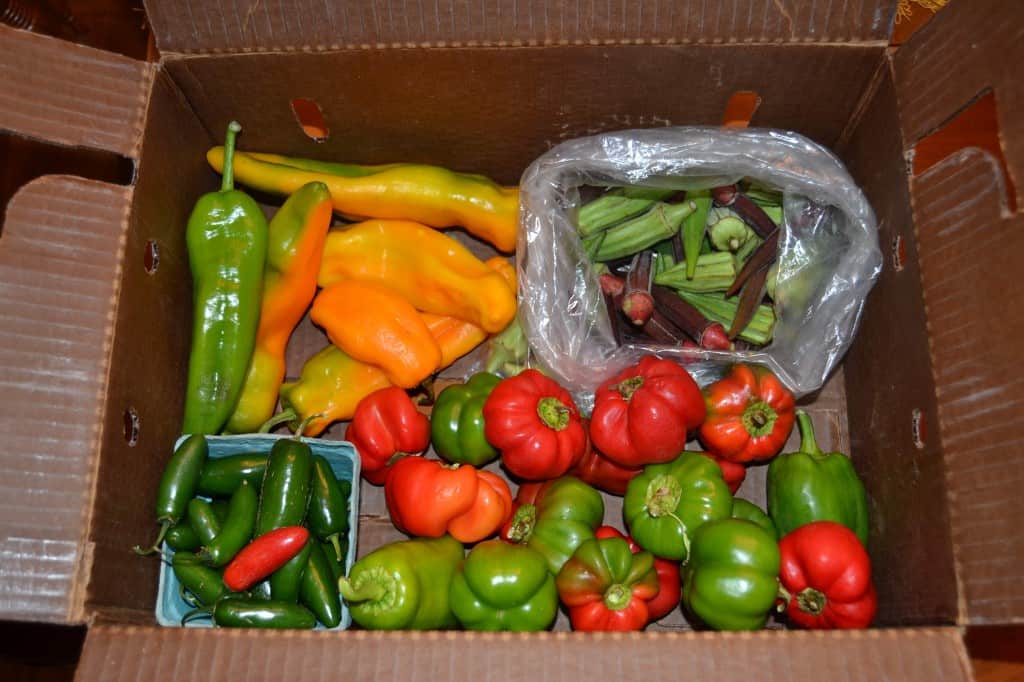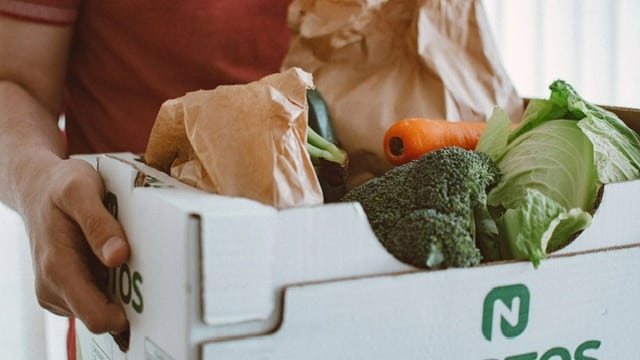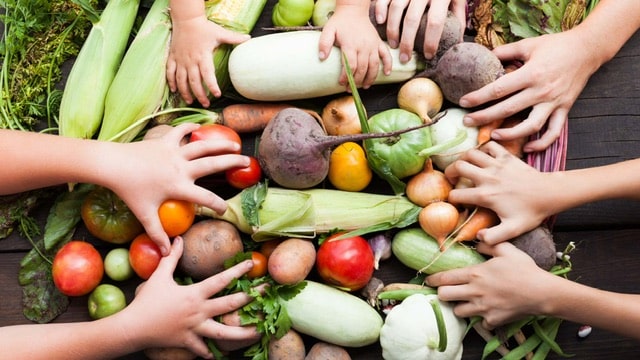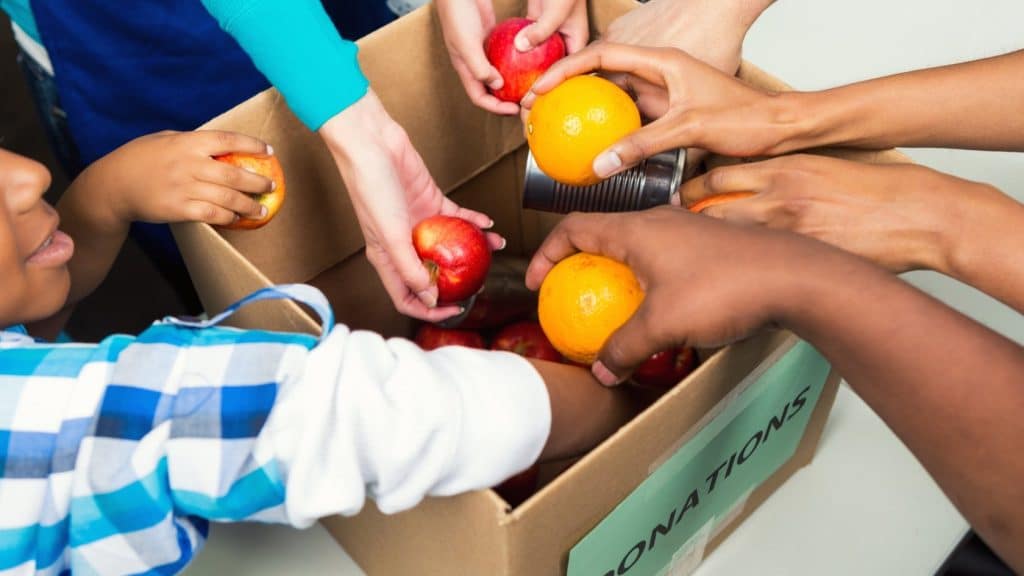When I created AmpleHarvest.org in 2009, I was not thinking about nutrition, the environment, community building, food systems or even hunger. I was thinking about waste.
I hate waste.
Wasted time, energy, emotions, money, food, you name it. As an almost 61 year old long distance cyclist, the two main reasons that I’m an excellent hill climber are that I stridently try not to waste any of my energy (kinetic or inertial), and because only half the hills are up. Perspective helps.
Ample Harvest West Milford (the original program that AmpleHarvest.org spawned from – learn more about that here) was my way of dealing with the wasted food in our community garden. I was soon to learn however that food waste is not a local problem – it is a global one.
In 2008, Bill Marsh, New York Times photographer created an amazing map of the United States made to represent the food wasted by a family of four in America in one month. About a pound per person per day or 122 lbs of food a month is thrown away by a family. All together, that’s about 100 billion pounds of food a year.
Around the same time, I learned about Jonathan Bloom’s (author of American Wasteland) web site wastedfood.com – my first in depth introduction to wasted food. That bothered me and it should bother you. The scope and magnitude of the waste certainly stuck with me. He is so highly respected in the field that even the New York Times uses it as a reference for their articles on food waste America.
A year later, AmpleHarvest.org was launched on May 18 with a wing, a passion and a prayer, but with no marketing plan. As it turned out, we didn’t need one. Three days later, Jonathan wrote an excellent blog article about AmpleHarvest.org that put a nationwide spotlight on this new program and catapulted AmpleHarvest.org towards where it is today.
So to Jonathan, thank you for telling America about food waste and thank you for being the first to tell America about the solution that exists in their backyards.
In May 2012, Tristram Stuart, TED speaker, author of Waste: Uncovering the Global Food Scandal and creator of Feeding the 5,000 – a campaign demonstrating that 5,000 meals could be created simply using food that would otherwise have been thrown away, helped to further bring the discussion of global food waste to the fore.
Disclosure Statement: Both Jonathan Bloom and Tristram Stuart are members of the AmpleHarvest.org Board of Advisors, and we are very grateful for their help and support.
Late in 2012, Dana Grunders of the National Resource Defense Council issued a critical report called Wasted: How America is Losing Up to 40 Percent of Its Food from Farm to Fork to Landfill – (updated in 2017 to include AmpleHarvest.org) . which everyone should read – preferably alone in case you start screaming.
These three experts along with myself and a dozen other speakers recently spoke – we each had 5 minutes – at a watershed event in New York City sponsored by Food Tank called Food Waste Free NYC. Earlier in the day, some of these people were at a United Nations meeting on food waste. The fact that the meeting was taking place at all speaks to the ever increasing awareness that wasted food helps to create or compound many problems not the least of which are hunger, malnutrition and a host of illnesses.
The day after the event, Tristram ran Disco Soup NYC – a smaller version of Feeding the 5,000. Crates of food gleaned from stores and farms in New Jersey was prepared by a celebrity chef and a team of volunteers and was served for free to passersby as well as those of us who attended. You or I might have paid handsomely for a meal like this in a nice restaurant and would have never known that it was created from food rescued from waste.
The point of the exercise was not to prepare the food or get a free meal. Rather it was to highlight the quality of the food we don’t consume and the loss of the meals millions could be having if we didn’t waste this treasure.
The widespread belief that the recovered food is unpalatable is as grounded in fact as was the old idea that pre-owned cars, back when they were derisively called “used cars”, were junk vehicles waiting to fall apart on the watch of the sucker who bought it. While some of the food is indeed unfit for consumption, a much larger amount of food is appealing, wholesome, and perfectly fine for consumption. Plus it is free.
The fact that 40% of the food in America is not consumed while so many are food insecure borders on being societally criminal. The fact that everyone who “touches” the food – from the farmer to the consumer – is part of problem, while tragic, also offers hope because it means that everyone can take steps to reduce or eliminate the food waste that is harming both the people and the planet (more on this in the Missed Opportunity – Part II).
While AmpleHarvest.org is a critical part of eliminating food waste – especially that from the 41.6 million home gardeners who grow food, there are plenty of opportunities throughout the food chain to attack the problem too.
I strongly urge you to watch Tristram’s TED Talk, read Jonathan’s book, and take a look at Dana’s report to understand the problem. Find where the food you “touch” is being wasted and then find ways not to. AmpleHarvest.org’s community opportunity, created for the National Day of Service, is an excellent place to start.
Although many American’s are hungry, America itself is not short on food.
However, the food we have but don’t eat is nothing more than a missed opportunity.




